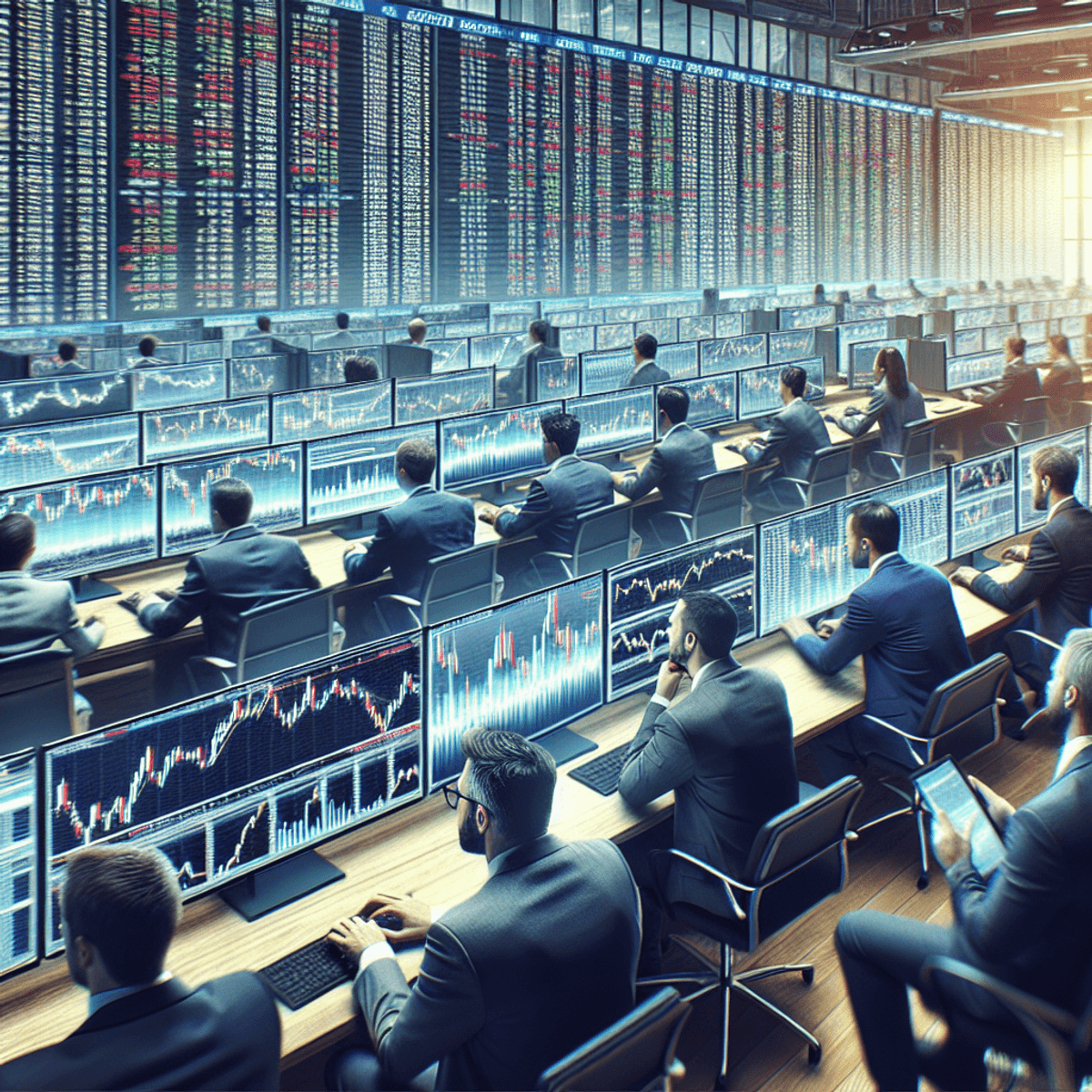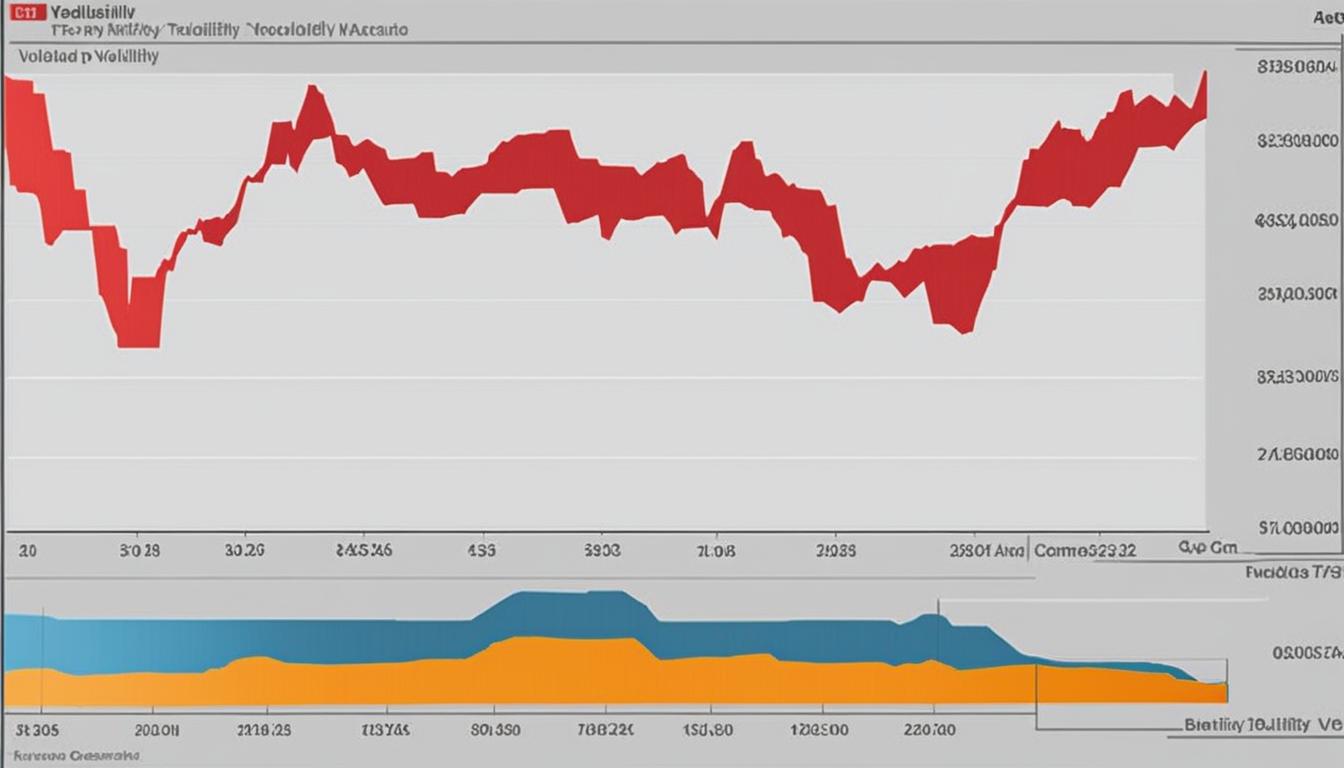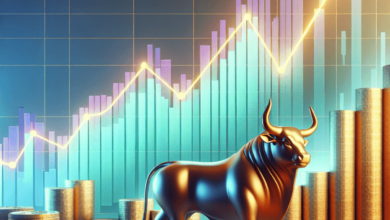How Do Market Makers Contribute to Market Efficiency?

Introduction
Market makers are central figures in financial markets, tasked with the continuous buying and selling of assets to provide liquidity. They create a more fluid trading environment by consistently quoting bid and ask prices, ensuring that there is always a market for securities. This role is vital for maintaining market efficiency, which refers to the extent to which market prices reflect all available information.
Market efficiency impacts overall market functioning significantly. Efficient markets enable accurate price discovery, reduce transaction costs, and enhance investor confidence. When markets are efficient, resources are allocated optimally as prices correctly signal the value of securities.
The relationship between market makers, liquidity, and market efficiency is key. Market makers:
- Narrow the bid-ask spread, making trading more cost-effective.
- Facilitate continuous trading opportunities.
- Enhance market depth by absorbing temporary imbalances in supply and demand.
To gain further insights into trading strategies and order types, it’s worth exploring Limit Order Vs Market Order: Here Are The Differences. Understanding the distinctions between these order types can greatly impact your trading decisions.
Additionally, comprehending how market makers operate provides a clearer picture of their indispensable role in fostering efficient financial markets. They not only support seamless trading but also contribute to the overall stability and functionality of the market ecosystem.
In this regard, it’s also important to consider the various types of options brokers available when engaging in options trading. Each broker type offers unique advantages that align with specific trading goals. To explore these different broker types further, you can refer to Comparing Different Broker Types For Options Trading: It’s Your Choice!
Moreover, technical analysis plays a crucial role in understanding market trends. One popular tool for this purpose is the Stochastic Oscillator Indicator. To unravel the secrets behind this indicator and enhance your trading strategy with professional insights, you can refer to our comprehensive guide on the Stochastic Oscillator Indicator.
1. Understanding Market Makers
Market makers are important players in financial markets. Their main job is to make trading easier by always being ready to buy and sell securities. This helps ensure that there is always someone to trade with, which is crucial for keeping the market active.
What Market Makers Do
Here are two key roles of market makers:
- Connecting Buyers and Sellers: Market makers act as middlemen, bridging the gap between people who want to buy a security and those who want to sell it. This helps ensure that trades can happen quickly.
- Managing Bid-Ask Spread: The bid-ask spread is the difference between the price at which a market maker is willing to buy a security (bid) and the price at which they are willing to sell it (ask). Market makers adjust this spread to control liquidity, narrowing it when there’s high demand and widening it when there’s low activity.
How Market Makers Affect Trading
Market makers have a significant impact on trading:
- Higher Trading Volume: By providing constant liquidity, market makers increase the amount of trading happening in the market. This is because traders can buy or sell securities without having to wait for someone else to come along.
- Lower Transaction Costs: When the bid-ask spread is smaller, it costs less for traders to make transactions. This makes trading more efficient and affordable for everyone involved.
To understand how market makers use complex strategies like delta hedging alongside their main role, it’s helpful to learn about option Greeks. Option Greeks are measurements that show how sensitive an option is to different factors. The most commonly used Greeks in options trading are Delta, Gamma, Theta, Vega, and Rho.
Market makers play a crucial role in keeping financial markets running smoothly. Their continuous quoting of prices and facilitation of trades helps make the market more efficient overall. This benefits traders by making it easier to buy and sell securities, reducing costs, and increasing overall market activity.
2. The Mechanism of Market Making
Market makers facilitate continuous electronic trading through a combination of strategic actions and advanced technologies. They constantly quote both bid and ask prices to ensure that there is always an opportunity for traders to execute buy or sell orders. This continuous presence in the market helps maintain fluidity, allowing for seamless transactions.
Utilization of High-Frequency Trading Algorithms

High-frequency trading (HFT) algorithms are integral to the operations of modern market makers. These algorithms enable rapid execution of trades, often within milliseconds, which is crucial for maintaining liquidity and handling large volumes of trades efficiently. HFT algorithms analyze market data in real-time, executing orders based on predefined strategies aimed at optimizing profits while minimizing risks.
- Speed: Execution times are reduced drastically, enhancing trade efficiency.
- Volume: Large numbers of trades can be processed almost simultaneously.
- Risk Management: Algorithms can adjust positions instantaneously based on market conditions.
Effects of Tighter Bid-Ask Spreads
The presence of market makers contributes significantly to the tightening of bid-ask spreads.
- Enhanced Market Quality: Narrower spreads mean that the difference between buying and selling prices is minimized, reducing the cost for traders.
- Increased Liquidity: Tighter spreads indicate a more liquid market where assets can be bought or sold quickly without causing significant price changes.
By narrowing these spreads, market makers improve overall market quality. This not only benefits individual traders but also enhances the stability and efficiency of financial markets as a whole.
Market makers also play a crucial role in options trading, where their continuous efforts to provide liquidity through advanced strategies and technology-driven executions are indispensable in supporting a robust trading environment. To further explore the world of options exchanges and how they operate, you may want to visit FxOptions, where you can unveil key insights into American financial markets.
The continuous efforts by market makers to provide liquidity through advanced strategies and technology-driven executions are indispensable in supporting a robust trading environment. These efforts include adapting options strategies to handle market reversals effectively, turning volatility into profit, and adjusting approaches to ever-changing markets.
For those interested in exploring the realm of market making in the crypto industry, understanding its basics and various types, it would be helpful to refer to this informative article on market making in crypto.
3. Enhancing Liquidity and Market Depth
In the world of market dynamics, liquidity traders play a vital role alongside market makers. These traders actively buy and sell securities, acting as an important force that supports the activities of market makers. Their main goal is to meet immediate cash needs or investment objectives, thereby contributing to overall market smoothness. Through these transactions, they ensure a steady stream of orders, which helps market makers maintain narrower bid-ask spreads.
Importance of Liquidity Traders
Liquidity traders are essential in helping market makers manage order flows more effectively. They do this by:
- Actively participating in markets
- Providing the necessary counterbalance to market makers
Significance of Market Depth
Market depth is another crucial factor to consider. It refers to the ability of the market to handle large order volumes without significantly affecting asset prices. A deep market has many buy and sell orders at different price levels, making price movements smoother and more predictable.
To better grasp market depth, it’s important to examine the limit order book, which contains all outstanding buy and sell orders.
The Relationship Between Liquidity Traders and Market Depth
Liquidity provision by traders and market depth are closely connected. Both elements play key roles in creating an efficient trading ecosystem:
- A robust limit order book with various price levels enhances liquidity provision.
- This minimizes the impact of large trades on market prices.
Understanding these concepts can help you navigate complex trading environments more efficiently.
Note: If you’re interested in managing risks associated with trading and understanding how implied volatility can affect your portfolio, you might find this article on decreasing implied volatility useful. It explores the impact of decreasing implied volatility on your investment portfolio and offers strategies to manage risks and maximize returns in a volatile market.
Note: Additionally, exploring concepts beyond liquidity and market depth can also be beneficial. For example:
- Options Settlement: Understanding how contracts are settled can significantly enhance your trading experience.
- Black Scholes Model: Delving into this model and its key concepts that revolutionize options pricing in modern finance can provide valuable insights.
By gaining knowledge in these areas, you’ll be better equipped to navigate the volatile market landscape while effectively managing risks and maximizing returns.
4. Promoting Orderly Price Discovery
Market makers play a crucial role in facilitating the price discovery process. By continuously providing quotes for both buying and selling, they help determine the fair market value of assets. Their activity ensures that prices reflect the most current information available, contributing to informational efficiency.
Here’s how market makers promote orderly price discovery:
- Absorption of Temporary Imbalances: Market makers absorb temporary imbalances in supply and demand, preventing erratic price movements. This stabilization is vital for maintaining orderly markets.
- Continuous Quoting: They constantly update bid and ask prices based on new information, allowing the market to react swiftly to changes in underlying conditions.
Understanding Financial Derivatives is essential to comprehend how financial instruments derive their value from underlying assets.
Market makers’ ability to manage these imbalances helps maintain a balanced market where prices accurately reflect supply and demand dynamics. This contributes to a transparent trading environment, essential for all market participants.
One such strategy that showcases market makers’ expertise is the Call Ratio Spread. This strategy offers comprehensive examples that can aid in better understanding trading techniques.
By promoting orderly price discovery, market makers enhance overall market quality. Their continuous presence and readiness to trade ensure that prices remain stable and reflective of true market conditions.
For those looking to discover neutral options strategies ideal for any market conditions, exploring Neutral Options Strategies can be highly beneficial. These strategies provide a winning edge in the world of trading.
5. Ensuring Fair and Transparent Markets
Regulatory oversight is essential for maintaining the integrity of financial markets. Organizations like the SEC (Securities and Exchange Commission) and FINRA (Financial Industry Regulatory Authority) closely monitor market maker activities to ensure compliance with established guidelines and fair practices.
Key Responsibilities of Regulatory Bodies
- SEC (Securities and Exchange Commission):Enforces securities laws
- Ensures market transparency
- Protects investors from fraudulent activities
- FINRA (Financial Industry Regulatory Authority):Oversees broker-dealers
- Implements rules to maintain market integrity
- Conducts regular audits and investigations
Market makers must adhere to these regulations to avoid manipulative practices such as spoofing or front-running. By enforcing strict guidelines, regulatory bodies help maintain a balanced trading environment where all participants have equal opportunities.
Importance of Fair Practices
Fair practices are critical for preserving trust in the market ecosystem. When market makers engage in ethical behavior, it:
- Enhances market liquidity
- Promotes orderly price discovery
- Reduces transaction costs for traders
Ensuring a transparent marketplace helps attract more participants, ultimately contributing to a more efficient financial system.
For more insights on trading strategies, you can explore comprehensive guides on call options and chart patterns provided by FxOptions.com.
Regulatory oversight combined with the commitment to fair practices creates a robust framework that supports efficient and transparent markets. This symbiotic relationship between regulators and market makers fosters an environment conducive to sustainable financial growth.
Behavioral and Structural Challenges
The decision-making processes of market makers are significantly impacted by behavioral finance biases. These biases, such as overconfidence, where market makers might underestimate risks, and herding behavior, which could lead to following the crowd rather than making independent decisions, can have profound effects. Additionally, loss aversion might cause market makers to avoid necessary risk-taking, thereby potentially decreasing liquidity in the market.
However, it is not just behavioral challenges that market participants face. Structural issues, such as market manipulation, also pose significant obstacles to maintaining a fair trading environment. Dominant market makers have the potential to exploit their position through practices like spoofing—creating false demand or supply to manipulate prices—or front-running, where they trade on non-public information before executing client orders. These activities undermine trust and can lead to significant distortions in price discovery.
To address these challenges, regulatory bodies such as the SEC and FINRA play a pivotal role in monitoring these activities to ensure transparency and fairness. They implement rules and surveillance mechanisms designed to detect and prevent manipulative behaviors. However, there are other factors at play as well.
A study by the CFA Institute explores the impact of market structure on institutional trading costs. It highlights how certain structural aspects of markets can significantly influence trading costs for institutional investors. This research further emphasizes the need for comprehensive reforms to create more efficient trading environments.
Diversifying Strategies with Advanced Options Strategies
For those looking to diversify their strategies while being mindful of such challenges, exploring advanced options strategies like the Iron Butterfly or Iron Condor may offer structured approaches with defined risk limits. These strategies provide well-crafted setups that boost trading strategies while mitigating risks associated with overconfidence or herding behavior.
Embracing Technology for Better Decision-Making
Furthermore, embracing technology can enhance decision-making capabilities in financial markets. For instance, algorithmic trading has proven to be effective in addressing some of these challenges. If you’re curious about how algorithmic trading can improve your options trading strategies, you can explore this insightful FAQ on algorithmic options trading.
By understanding these behavioral and structural challenges, as well as the impact of market structure on institutional trading costs, you can better navigate the complexities of modern financial markets.
Future Outlook: Technology and Market Evolution
Technological advancements are changing how market makers operate in today’s markets. High-frequency trading (HFT) algorithms have made a significant impact by allowing market makers to execute trades quickly, sometimes within milliseconds. This speed greatly improves their ability to provide liquidity. These algorithms analyze large amounts of market data in real-time, enabling market makers to adjust bid-ask spreads instantly and manage risk more effectively.
1. Potential Impact of Decentralized Finance (DeFi) Platforms and Blockchain Technology
Changes in market structure are also affecting market-making strategies. The emergence of decentralized finance (DeFi) platforms and blockchain technology introduces new ways of trading and providing liquidity. These innovations could potentially decentralize the role traditionally played by market makers, spreading it out among more participants.
2. The Growing Role of Artificial Intelligence (AI) and Machine Learning
The future of market making will likely involve a greater reliance on artificial intelligence (AI) and machine learning. These technologies can be used to analyze data, predict market movements, and optimize trading strategies. As AI and machine learning continue to advance, they hold the promise of reducing transaction costs even further and making markets more efficient.
“The future of market making will likely see increased reliance on artificial intelligence (AI) and machine learning to predict market movements and optimize trading strategies.”
3. Potential Benefits for Traders
These technological advancements in market making can bring several benefits for traders:
- Lower transaction costs: With increased efficiency in executing trades and tighter bid-ask spreads, traders may experience lower costs when buying or selling securities.
- Improved liquidity: Market makers using advanced algorithms can provide liquidity more consistently, reducing the impact of large buy or sell orders on security prices.
- Faster trade execution: High-frequency trading allows for quicker order matching and trade execution, minimizing the risk of price fluctuations during the transaction process.
4. Potential Challenges and Risks
While technological advancements in market making offer many opportunities, they also come with potential challenges and risks:
- Increased competition: As more participants adopt high-frequency trading and other advanced strategies, market making becomes more competitive, potentially squeezing profit margins for individual market makers.
- System vulnerabilities: Reliance on technology introduces the risk of system failures or cyberattacks that could disrupt market-making activities and impact overall market stability.
- Regulatory considerations: Regulators may need to adapt and establish guidelines for overseeing these new technologies to ensure fair and transparent market practices.
“The future of market making will likely see increased reliance on artificial intelligence (AI) and machine learning to predict market movements and optimize trading strategies.”
For a deeper understanding of how innovative strategies like synthetic long options integrate into modern trading, you can explore the Synthetic Long Options Strategy. This strategy provides insights into how it works and when best to implement it in your financial playbook.
To stay informed about fundamental financial concepts that impact daily trading decisions, you may also find it helpful to dive into the intricacies of phrases like “What Does To Exercise An Option Mean?” in financial parlance. Understanding these concepts can be crucial in navigating the ever-changing landscape of modern markets.
Emerging technologies and structural shifts are poised to redefine the landscape of market making, promising a future where liquidity provision is more efficient and accessible than ever before.
Conclusion
Market makers play several key roles in enhancing efficiency within financial markets:
- Liquidity Provision: By continuously quoting bid and ask prices, market makers ensure there is always a market for securities, reducing the bid-ask spread.
- Reduced Transaction Costs: Their operations lower transaction costs for traders by providing mechanisms for quick and efficient trade execution.
- Price Discovery: They facilitate orderly price discovery by absorbing temporary imbalances in supply and demand.
- Market Depth: Market makers enhance liquidity and market depth, which is crucial for smoother trading experiences.
As technology advances, the role of market makers will continue to evolve. High-frequency trading algorithms and other technological innovations are likely to shape future market structures. These changes could influence the effectiveness of market making strategies and might necessitate further reforms in trading systems.
To gain deeper insights into market dynamics, it’s worth exploring related financial concepts such as implied volatility, which explains the math behind options’ implied volatility derived from the pricing model, and open interest in option contracts, which unveils the hidden power of open interest in option contracts by providing insights into market trends and investor sentiment for smarter investment decisions.
Understanding how market makers contribute to liquidity can provide better insights into potential bubbles in financial markets, helping investors make smarter decisions.






